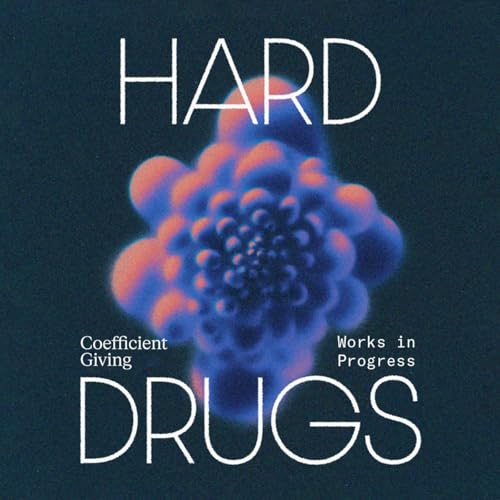Hepatitis B is a tiny virus that causes hundreds of thousands of deaths from liver disease and cancer each year. The vaccine against it became the first of many milestones: it was the first viral protein subunit vaccine, the first recombinant vaccine, and the first vaccine to prevent a type of cancer.
In this episode, Jacob and Saloni follow the trail of strange jaundice outbreaks that scientists traced to a stealthy liver virus, how scientists turned one viral surface protein into a lifesaving shot for newborns, and how it was all built upon breakthroughs in immunology.
Hard Drugs is a new podcast from Works in Progress and Coefficient Giving about medical innovation presented by Saloni Dattani and Jacob Trefethen.
You can watch or listen on YouTube, Spotify, or Apple Podcasts.
Chapters:
0:00:00 Introducing the hepatitis B vaccine
0:15:46 The mysterious trail of jaundice outbreaks
0:28:03 How a tiny virus causes cirrhosis and liver cancer
0:53:19 Maurice Hilleman's purified hep B vaccine
1:17:36 Turning the hep B vaccine recombinant
1:29:14 The impact of hep B vaccination
1:39:27 The 19th century battle for immunology
2:01:34 How the body makes an almost infinite number of antibodies
2:30:57 How subunit vaccines took over
2:45:33 Conclusion
Saloni’s substack newsletter: https://www.scientificdiscovery.dev/
Jacob’s blog: https://blog.jacobtrefethen.com/
Books:
- Paul Offit (2007) Vaccinated: One Man's Quest to Defeat the World's Deadliest Diseases
- Arthur M Silverstein (2009) A history of immunology
- Ronald W Ellis (1993) Hepatitis B Vaccines in Clinical Practice
- Sally Smith Hughes (2011) Genentech: The beginnings of biotech
Articles:
- Timothy M. Block et al. (2016) A historical perspective on the discovery and elucidation of the hepatitis B virus https://doi.org/10.1016/j.antiviral.2016.04.012
- Naijuan Yao et al. (2022) Incidence of mother-to-child transmission of hepatitis B in relation to maternal peripartum antiviral prophylaxis: A systematic review and meta-analysis https://doi.org/10.1111/aogs.14448
- Jill Koshiol et al. (2019) Beasley’s 1981 paper: The power of a well-designed cohort study to drive liver cancer research and prevention https://pmc.ncbi.nlm.nih.gov/articles/PMC5866222/
- William J. McAleer et al. (1984) Human hepatitis B vaccine from recombinant yeast https://doi.org/10.1038/307178a0
- Chunfeng Qu et al. (2014) Efficacy of Neonatal HBV Vaccination on Liver Cancer and Other Liver Diseases over 30-Year Follow-up of the Qidong Hepatitis B Intervention Study: A Cluster Randomized Controlled Trial https://doi.org/10.1371/journal.pmed.1001774
- Anthony R Rees (2020) Understanding the human antibody repertoire https://doi.org/10.1080/19420862.2020.1729683
 2025/12/222 時間 59 分
2025/12/222 時間 59 分 2025/11/262 時間 6 分
2025/11/262 時間 6 分 2025/10/294 時間 35 分
2025/10/294 時間 35 分 2025/10/151 時間
2025/10/151 時間 2025/10/0155 分
2025/10/0155 分 2025/09/1618 分
2025/09/1618 分 20 分
20 分 4 時間 54 分
4 時間 54 分
